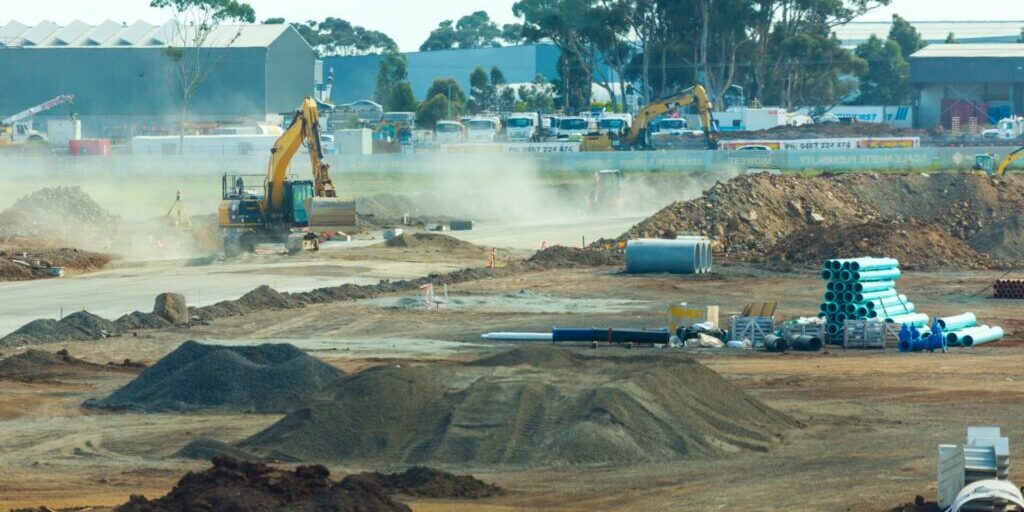The Construction Productivity Dilemma: Why Aren’t We Improving?

Part II of our series on construction productivity explores the many elements that make the construction industry unique, challenging, and primed for disruption.
Basic building processes haven’t changed in decades, yet construction productivity lags behind every other industry in the global economy.
So, what about the construction industry prevents contractors and their work crews from being more productive and profitable?
Here’s what we cover:
- Current levels of construction productivity: Do we know?
- Socio-economic factors affecting construction productivity
- Construction productivity defies improvement:
- Cycle times and sequencing affect construction productivity
- Cascading failures hinder construction productivity.
- The construction productivity question remains unanswered.
- What are the available options?
Current levels of construction productivity: Do we know?
Current independent data is hard to find, and researchers quibble about the actual numbers.
McKinsey & Company shows productivity in general decline and stagnation.
While the U.S. Bureau of Labor Statistics shows slim gains in two of four sectors of the industry;
- Industrial construction, and
- Highways, roads, and bridge construction.
Residential construction, on the other hand, appears woefully inefficient.
Regardless of the data set, it’s clear that productivity and profit are suffering across the entire industry despite the opportunities to improve.
Socio-economic factors affecting construction productivity
Regulatory bureaucracy and slow permitting processes hamper productivity on state and federal infrastructure projects.
But, while significant in scope and funding, infrastructure projects do not represent the whole construction industry. And because of that, their productivity woes only explain a small percentage of the construction industry’s productivity problem.
Developing countries
Many believe the limited operating capital in developing countries unfairly skews construction productivity statistics.
Work in these regions relies more on labor than machinery because labor is cheaper and more plentiful. But labor without machinery is far less productive. So the argument here is solid, and the tradeoff seems to make sense.
Economic volatility
Economic uncertainty has taught the global construction industry to prepare for inevitable economic downturns.
But unfortunately, this uncertainty also prevents many firms from investing in the equipment and automation that would otherwise improve their productive capacity.
The reasoning is simple:
Employees are easy to dismiss when work dries up. But the burden of equipment payments doesn’t go away when times get tough.
Construction productivity defies improvement:
Brian Potter, structural engineer and senior fellow at the Institute for Progress, explores the many impediments to construction productivity in his Substack newsletter, Construction Physics.
Brian and his exhaustive research deserve credit for much of the following information.
Inconsistent environments
Interior and exterior site conditions affect productivity in myriad ways.
- Weather delays bring production to a halt.
- Unfavorable site conditions slow progress and cause delays.
- Shifting site locations require long commute times or living away from home.
- These disruptions add stress and diminish workers’ resilience and productivity.
- A limited access work environment means materials aren’t always available when needed.
- The distance between the workers, their workstations, tools, and materials is constantly changing.
- Scattered resources increase cycle times, and that situation causes delays.
The inconsistencies in the construction environment lead to inconsistent workflows as workers switch tasks and change locations while supplying their means of production.
Inconsistent workforce
Additionally, each construction project typically employs dozens of independent contractors, subcontractors, specialty contractors, and suppliers.
These contractors struggle to maintain a skilled workforce, and many of their workers are untrained.
Management often assigns workers to tasks at different job sites depending on their training and skill level. That means each work team may or may not have the same crew members daily.
These inconsistent construction teams may not have worked together in the past. And these disparate teams often have competing priorities and different management strategies.
Inconsistent work teams laboring alongside unfamiliar counterparts in ever-changing production environments make group learning and process improvement difficult, if not nearly impossible.
Cycle times and sequencing affect construction productivity
Every operation on the construction site has a cycle time, and each cycle moves the worker and the workstation to a new location.
This process is the opposite of what we see in a typical production environment where the worker and workstation are relatively stationary, and the work comes to them.
Multiply this transitory workflow across dozens of trades and multitudes of workers, and sequencing work and scheduling mobile work crews becomes an ever-shifting challenge.
Material availability
Sequencing just-in-time material deliveries for every trade on the construction site can be effective.
The Lean Construction Institute offers research and resources to improve productivity through lean project delivery methods such as this.
However, not many construction companies employ lean methodology. And supply-chain disruption, delays, and material shortages continue to plague most projects despite best efforts.
Consistent disruption
If there’s one consistency across the construction industry, it’s the constant disruption.
Construction is one of the few industries that change the product’s design as they build it. But unfortunately, every change, whether to the design, material, or unforeseen obstacle in production, sets the entire process back to zero.
Cascading failures hinder construction productivity.
With all the changes associated with most construction projects, it’s typical for outdated, inaccurate plan sheets to circulate on the job site. Unfortunately, it’s common to find work crews not accessing accurate plans even when they are available.
Digital technology makes document storage, communication, and project-wide collaboration easier. But relatively few firms are using this technology to its full potential.
State and federal governments are funding technology adoption for major infrastructure projects, but industry-wide change is still slow in coming.
As a result, productivity continues to slog along with no unified plan for improvement.
The construction productivity question remains unanswered.
So, does the lack of automation, recurring inconsistencies, and constant disruptions on the job site give the construction industry a legitimate reason for its productivity struggle and stagnation?
Quoting Brian Potter:
“In some ways, construction processes are structured precisely the opposite way they should be. Efficiency gains and productivity improvement require stable operations with a steady stream of new technology, but construction has stable underlying technology with constantly changing operations.”
What are the available options?
There are options, of course, and many firms are leading the way.
Industry-wide change won’t be easy, but as we’ve seen in marine construction, change is coming ready or not. And only firms with a well-planned strategy will thrive.




